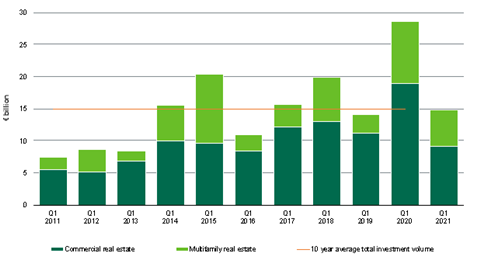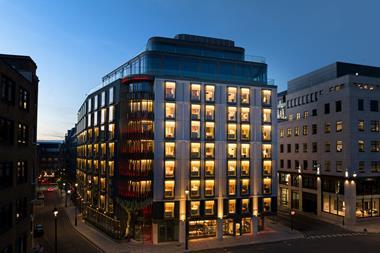German property investment volumes plummeted 48% in the first quarter, with only €14.8 bn of assets traded in the first three months of the year, according to broker CBRE.

However, CBRE noted that in a 10-year comparison of first quarters, the result, as it stands, is only one percent below the long-term average.
’Investment activity was very subdued in the first six weeks of the opening quarter due to tight restrictions on international travel and on-site inspections as a result of the extended lockdown and following on from the very dynamic final quarter. Since mid-February, however, the market has picked up significant momentum again,’ said Fabian Klein, head of Investment at CBRE Germany. “
Multi-family properties in the lead
In the first quarter of 2021, the transaction volume of institutional residential property investment took over the lead from office, the asset class that generally captures the largest investment volume. While office accounted for €3.2 bn, the multifamily market came in at €5.7 bn.
Both logistics and industrial properties, along with retail properties, reported an investment volume of €1.9 bn. Almost €700 mln was allocated to land for development, while hotel properties accounted for almost €500 mln. The transaction volume in all these asset classes fell short of the level seen in the first quarter of 2020.
Only the ‘other’ category that, among other assets, comprises data centers and healthcare real estate registered a 37% increase in the investment volume to just under €1 bn.
Emphasis on risk-averse strategies
In the first quarter, risk-averse investment strategies became increasingly prominent. As a result, 71% of the transaction volume was allocated to core and core plus properties. ‘The Top 7 cities are especially benefiting,’ Klein said. Transaction volume was nevertheless 54% lower in these locations as well.
At more than €2 bn, the capital city of Berlin remained the largest market for domestic and international investors, followed by Munich and Frankfurt am Main. Munich reported the lowest year-on-year decline of 25%.










